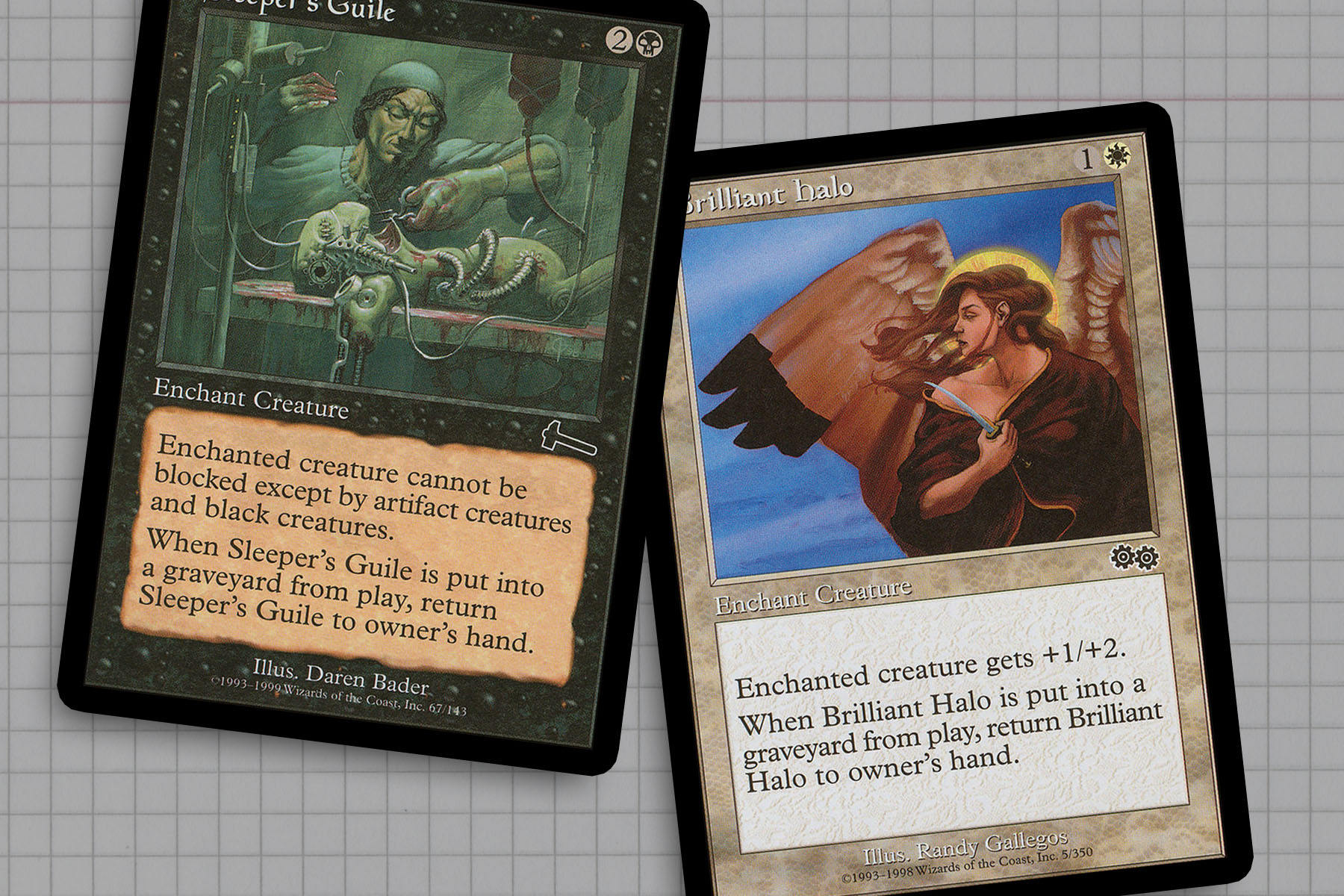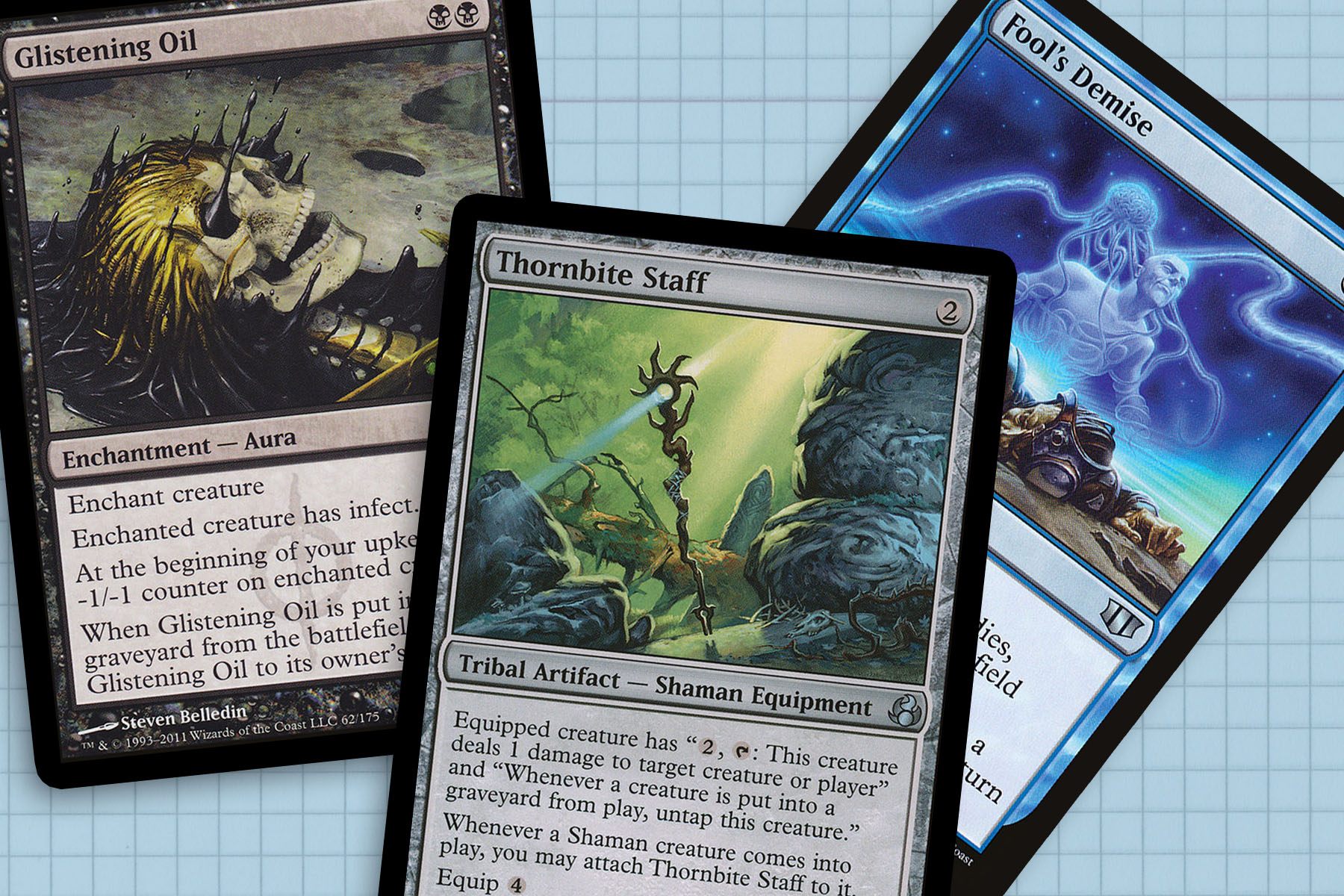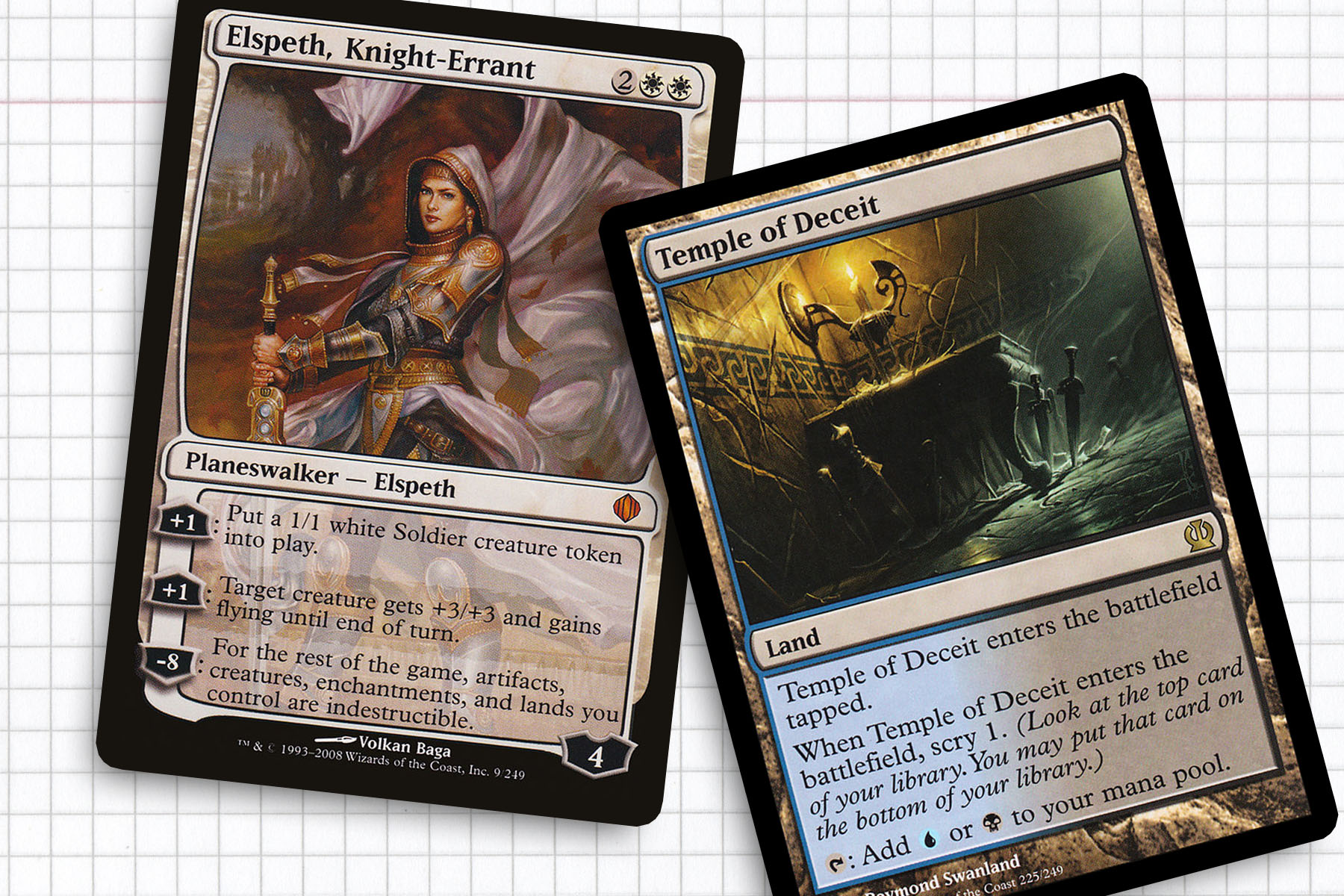Welcome to a very special installment of my weekly series: my 100th article about Commander. I have been thinking of this particular article for the better part of the last two months, trying to figure out what would be the best topic for such a landmark in my writing career. Earlier this week Bruce Richard wrote an article about power creep in Commander and that got me thinking about the early days of Commander—at least my early days of Commander. I realized that maybe the best place to end my first one hundred would be my beginning.
Ertai, the Corrupted was the first deck I built from the ground up. It still holds a special place in my heart, even though I have since dismantled it. Luckily, I was smart enough to archive my decklist in a draft email seven years ago, meaning we can talk about the deck in its earliest form.
General: Ertai, the Corrupted
Enchantments: Arcanum Wings, Asha’s Favor, Auramancer’s Guise, Brilliant Halo, Cessation, Chime of Night, Cloak of Mists, Diplomatic Immunity, Disappear, False Demise, Fool’s Demise, Freed from the Real, Gift of Granite, Glistening Oil, Illuminated Wings, Launch, Lingering Mirage, Luminarch Ascension, Pemmin’s Aura, Promise of Bunrei, Reality Acid, Rhystic Study, Sea’s Claim, Second Wind, Sleeper’s Guile, Snake Cult Initiation, Spirit Link, Spirit Loop, Spreading Seas, Vampiric Link, Zephid’s Embrace
Creatures: Auratouched Mage, Belfry Spirit, Bloodghast, Emeria Angel, Faceless Butcher, Karmic Guide, Mulldrifter, Nether Traitor, Reassembling Skeleton, Shriekmaw, Sphinx of the Steel Wind, Zur the Enchanter
Artifacts: Azorius Signet, Darksteel Ingot, Dimir Signet, Nim Deathmantle, Obelisk of Esper, Orzhov Signet, Skullclamp, Swiftfoot Boots, Thornbite Staff
Sorceries: Battle Screech, Decree of Justice, Demonic Tutor, Diabolic Tutor, Rite of Replication
Insants: Carrion, Even the Odds, Join the Ranks, Master’s Call, Raise the Alarm
Land: 13 Island, 9 Plains, 6 Swamp, Arcane Sanctum, Azorius Chancery, Caves of Koilos, Coastal Tower, Dimir Aqueduct, Drowned Catacomb, Esper Panorama, Glacial Fortress, Orzhov Basilica
This deck feels clunky as I look it over with years of hindsight, but I think it important to understand what this deck really meant in the context of the early 2010s. When I first dove into the larger public Commander metagame, Ertai, the Corrupted was a problem child. The deck played enchantments like Ghostly Prison, Propaganda, Standstill, and Bitterblossom to buffer the rest of the table’s forward momentum. Adding to that, the deck played Doomed Traveler, Reassembling Skeleton, and Bloodghast to feed the card advantage with recurring creatures.
My version of the deck finds its roots in an episode of Commander Cast where they explored a build of Ertai, but more as an Enchantment-based Voltron deck. This fit well with the metagame I was facing at the time, filling the need for aggression at some tables and control against players that were too threatening for my liking. The Voltron elements achieved through auras could also be used as fodder for Ertai’s counter magic. For a general known for being slow and oppressive, this version felt clever.

The Power of Urza Block
Attaching Launch or Sleeper’s Guile to give Ertai evasion often meant a rapid clock for commander damage, especially with Auramancer’s Guise in the picture. At the time I got a lot of traction out of the aura cycles from Urza block that would return to my hand when they hit the graveyard. On defense, Cessation could lock down big attackers repeatedly.
The recursive aura theme came back in Time Spiral with Spirit Loop, Fool’s Demise, and Fallen Ideal, the last of which should have also made a showing here in hindsight. And this is where I discovered cards like Reality Acid and Snake Cult Initiation as a method to really alienate friends. The former allowed me to counter a spell and remove a permanent I wasn’t fond of, while the latter put me on a steady path to victory through poison counters.

Rise and Fall
I had the time of my life with this deck; it’s probably what sold me on the format during my formative years. Often people would overlook the deck’s potential simply because they didn’t recognize a general from such an old set, while more experienced players would often kill me on sight. It was a hard balance to find in many respects, because sometimes it would result in free wins and in other times I would be looking around the card shop for the next game to jump into as I dropped out on turn five. In some ways I really miss this deck. It did a great thing, helping to be a transition between the aggressive decks that I favor now and the control decks that I always wanted to be good with but failed miserably to pilot.
Adding to the appeal of this deck was the heavy use of tokens to help flood the board, while also having their main use as sacrificial bodies to either Ertai or Skullclamp. The combo with Thornbite Staff was a mainstay of the deck even before I discovered it. It’s possible that this deck could have adapted once Theros came out, becoming a signature deck. But, in my eyes because of the way that I’ve learned to build deck and add nuance, this was never going to be something I played forever.

What I Know Now
With hindsight and experience comes a clearer picture of how this deck could work today. Even then, I should have been playing Bitterblossom and Elspeth, Knight Errant to generate tokens. Nowadays, I would use Dawn of Hope and Anointed Procession to maximize the amount of tokens lying around as fodder for our general.
While I was primed for a poison win through Snake Cult Initiation and Glistening Oil, I should have also packed Grafted Exoskeleton. As a backup plan, both Secure the Wastes and Entreat the Angels can help us go wide and improve our chances of having access to Adanto, the First Fort through Legion’s Landing.
The lands I use in my deck are normally an afterthought, with things like shocklands only being appropriate in decks that could actively tutor for them. But it seems clear now that I was too reliant on basic lands to substitute for lands I was too lazy to seek out. Using lands like the Theros scrylands or even common dual such as Dismal Backwater, Scoured Barrens, and Tranquil Cove would be a good update to the mana base to help with color fixing and deck smoothing.
While admittedly a relic of a bygone age; with the tools now available to us, I believe this deck has a lot of potential in the direction that I had originally taken it. In the modern Commander metagame a deck like this is probably too slow to ever be considered top-tier. But in a play group that values big spells as their win conditions, this can be a solid speed bump to keep players honest.
As a way to cap off 2017 I talked about the behind-the-scenes moments that meant the most to me in the first nine months of my writing. But 2018 was a pretty amazing year. Not only did I make it onto the mothership more times than I could count, but I also got preview cards—something that I could never have imagined as I was playing the game a decade and half ago. I would like to thank Hipsters of the Coast, who believed in me enough to let me start writing two years ago—as it turns out next week is my two-year anniversary—and most of all I want to thank my editor Carrie who does so much corralling of my craziness to give you coherent articles to read every week. I look forward to the next 100 articles and all of the powered up generals Wizards has in store for us. Until next time, thanks for reading.
Ryan Sainio is a Graphic Designer who writes about EDH, the EDH community, and streams on Twitch in his down time. He has been playing Magic: The Gathering since 7th Edition in 2002 and values flavorful and fun gameplay over competitively optimized decks. Join him for a stream at twitch.tv/hipstersainio on Tuesday nights.

